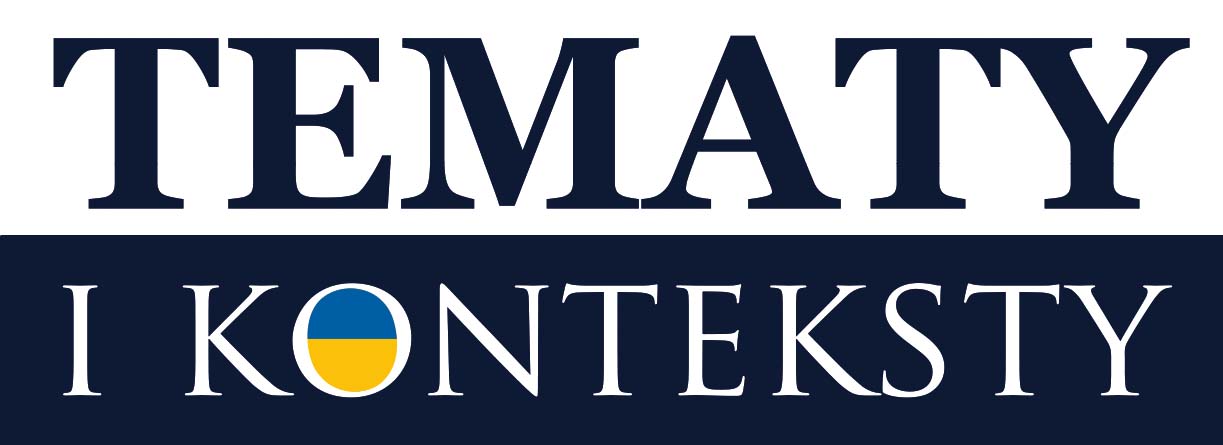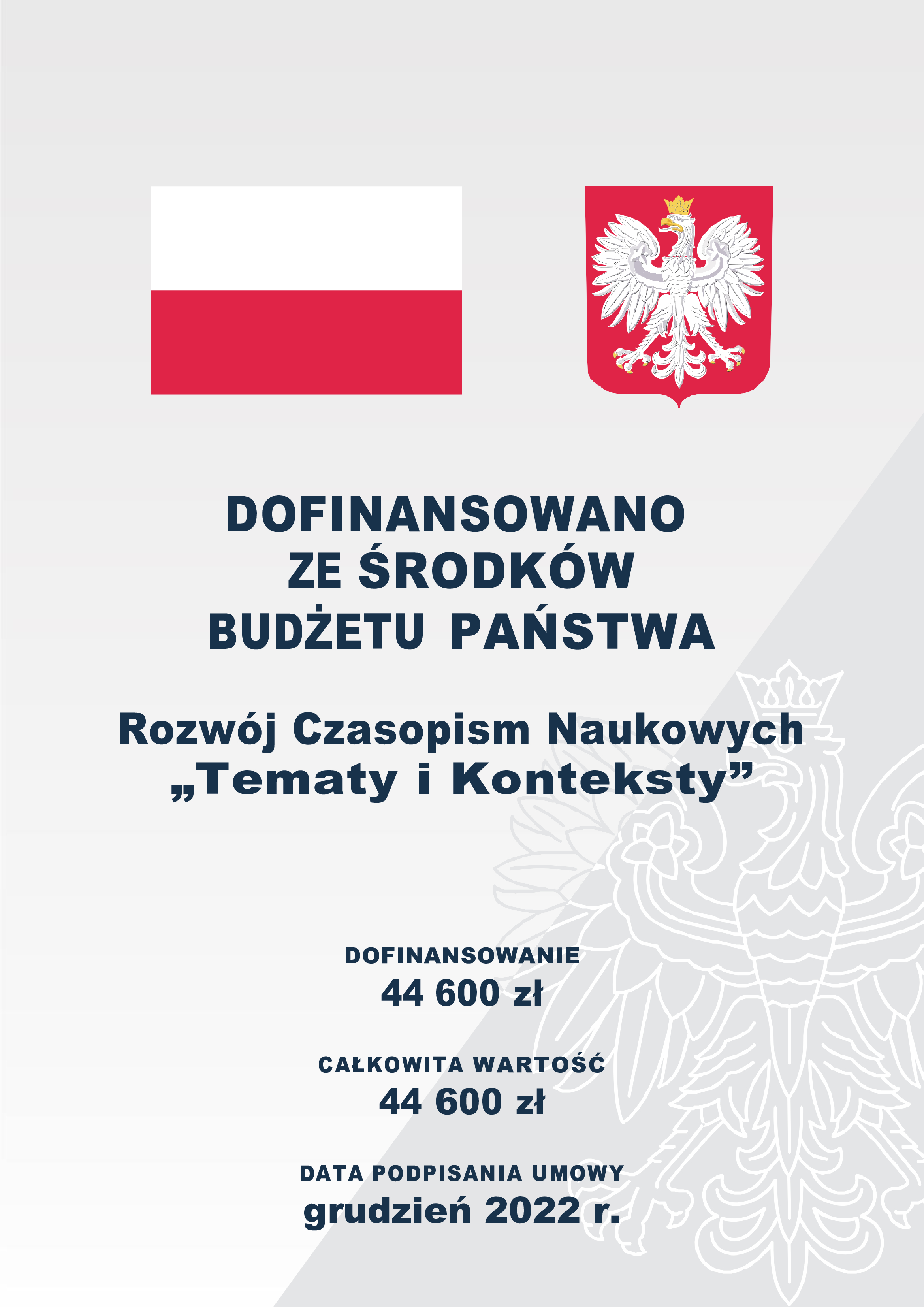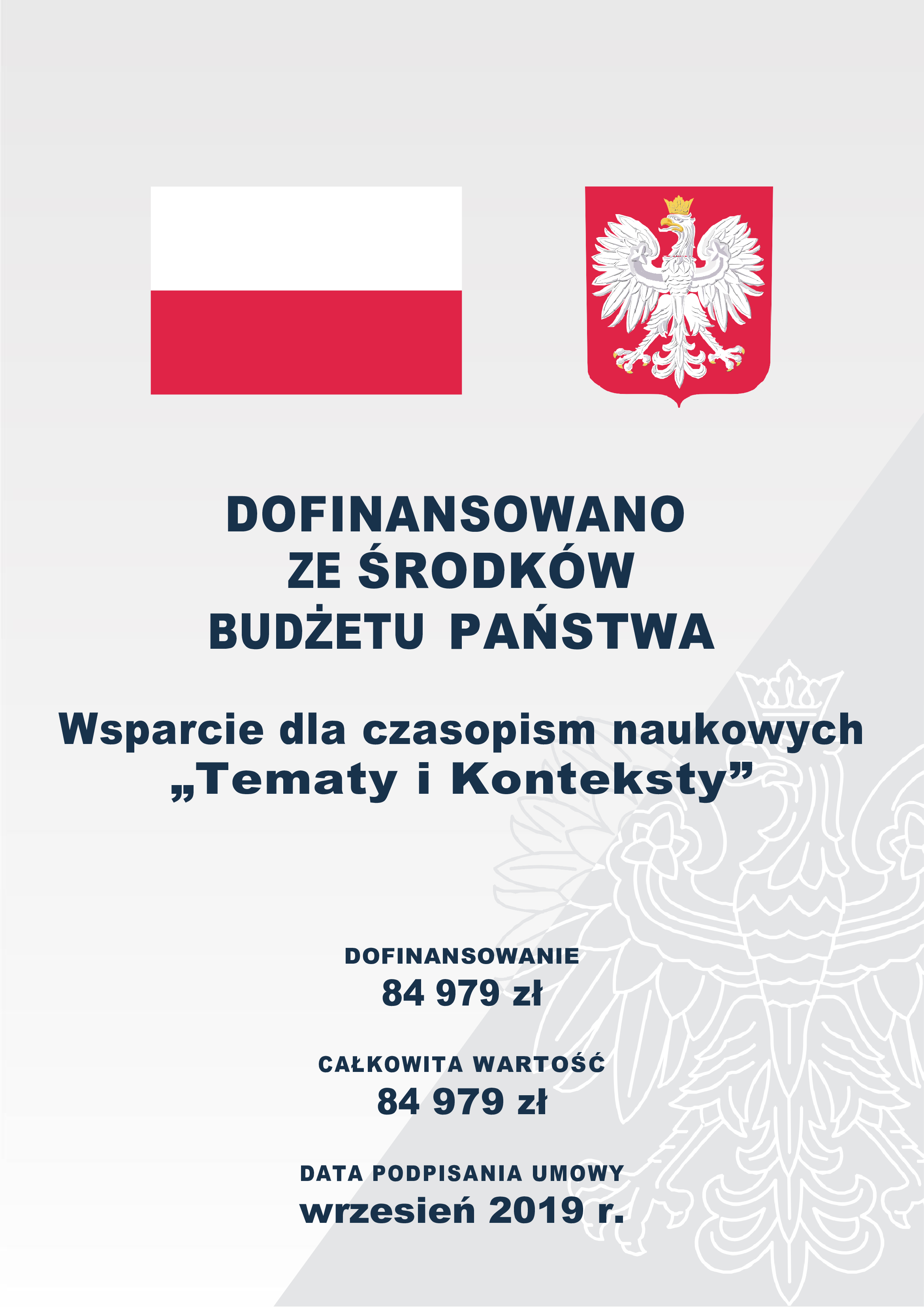Język strachu w literaturze dziecięcej. Studium przypadku wierszy dla dzieci Teda Hughesa
DOI:
https://doi.org/10.15584/tik.2021.29Słowa kluczowe:
strach, Joseph LeDoux, poezja dla dzieci, Ted Hughes, leksykon i figuracja strachu, antropomorfizm, obrazowanie werbalne i wizualne, zarządzanie strachemAbstrakt
Artykuł podejmuje temat języka strachu wykorzystywanego w literaturze dziecięcej na przykładzie poezji Natury adresowanej do młodego czytelnika autorstwa Teda Hughesa, brytyjskiego poety II połowy XX w. Autorka przyjęła dla opisu dwu blisko spokrewnionych ze sobą emocji – strachu (fear) i obawy/lęku (anxiety) – model propagowany przez amerykańskiego neurobiologa Josepha LeDoux, w szczególności w jego dziele Anxious (2015). W opinii LeDoux uczucie strachu nie jest nam wrodzone, lecz powstaje jako konstrukt kognitywny wyłaniający się w procesie używania języka ojczystego w określonym kontekście społeczno-kulturowym. Szczególna atmosfera poezji Hughesa to rezultat zastosowania bogatego słownika terminów powiązanych z uczuciem strachu, jak również zręcznie powiązanej z nim figuracji (antropomorfizmy, porównania). Poetyckie obrazowanie skutecznie dopełnia leksykon i tropy, powołując do istnienia światy fikcyjne, często dziwne i groźne, odległe od doświadczenia młodego odbiorcy. Autorka postrzega leksykon, figurację i obrazowanie (zarówno werbalne, jak i wizualne poprzez ilustracje w książkach dla dzieci) jako ważny instrument dydaktyczny, uczący dzieci, jak stawić czoła przerażającym doświadczeniom. Ta umiejętność przygotowuje też młodych czytelników do zmierzenia się w przyszłości z obawą/lękiem, emocją typową dla dorosłego życia, a związaną głównie z problemami egzystencjalnymi.
Downloads
Bibliografia
Altheide, David L. 1997. “The News Media, the Problem Frame, and the Production of Fear.” Sociological Quarterly 40 (3): 475-503.
Armstrong, Paul B. 2020. Stories and the Brain. The Neuroscience of Narrative. Baltimore: Johns Hopkins University Press.
Auden, Wystan H. 1947. The Age of Anxiety: A Baroque Eclogue. New York: Random House.
Bracha, H. Stefan. 2004. “Frieze, Flight, Fight, Fright, Faint: Adaptionist Perspectives on the Acute Stress Response Spectrum.” CNS Spectrum 9 (9): 679-85. doi:10. 1017/s1092852900001954.
Cap, Piotr. 2017. The Language of Fear: Communicating Threat in Public Discourse. London: Palgrave Macmillan.
Castano, Emanuele, Bernhard Leidner, Alain Bonacossa, John Nikkah, Rachel Perrulli,
Bettina Spencer, and Nicholas Humphrey. 2011. “Ideology, Fear of Death and Death Anxiety.” Political Psychology 32 (4): 601-21.
Chrzanowska-Kluczewska, Elżbieta. 1994. “Proximate and Remote Possible Worlds in Literary Fiction and Their Inhabitants.” In Literature and Language in the Cultural Context. Proceedings of the Inaugural Conference of Polish Association for the Study of English, Cracow-Przegorzały, 27-30 April 1992, edited by Krystyna Stamirowska, Zygmunt Mazur, and Anna Walczuk, 195-207. Kraków: Universitas.
Chrzanowska-Kluczewska, Elżbieta. 2007. “On Interplanetary Travels Between Friendly and Unfriendly Worlds.” In Cognition in Language. Volume in Honour of Professor Elżbieta Tabakowska, edited by Władysław Chłopicki, Andrzej Pawelec, and Agnieszka Pokojska, 555-73. Kraków: Tertium.
Chrzanowska-Kluczewska, Elżbieta. 2013. Much More than Metaphor. Master Tropes of Artistic Language and Imagination. Frankfurt am Main: Peter Lang Edition.
Chrzanowska-Kluczewska, Elżbieta. 2018. “The Taming of Death in Western and Eastern Tradition as Reflected in Texts of Culture (Arts, Sacred Texts and Crafts). Christianity vs. Tibetan Buddhism.” In Disease, Death, Decay in Literatures and Cultures, edited by Ryszard W. Wolny and Katarzyna Molek-Kozakowska, 173-89. Opole: Uniwersytet Opolski.
Chrzanowska-Kluczewska, Elżbieta. 2020. “The Aesthetics of Frankenstein. Nightmarish Landscapes in European Romantic and Symbolic Fantasy Literature and Fantastic Painting.” In Frankenstein 1818.2018 – Parabel der Moderne / Parable of the Modern Age. Symposium 2018 in Ingolstadt, edited by Dieter Petzold and Klaudia Seibel, 73-90. Berlin: Peter Lang.
Damasio, Antonio. 1994. Descartes’ Error: Emotion, Reason, and the Human Brain. New York: Gosset / Putnam.
Decety, Jean. 2002. “[Naturalizing Empathy].” L’Encephale 28: 9-20.
Dillard, James P., and Jason W. Anderson. 2004. “The Role of Fear in Persuasion.” Psychology & Marketing 21 (11): 909-26.
Ekman, Paul. 1992a. “An Argument for Basic Emotions.” Cognition and Emotion 6: 169-200.
Ekman, Paul. 1992b. “Facial Expressions of Emotions. New Findings, New Questions.” Psychological Science 3: 34-8.
Encyclopaedia Britannica. 2020. “Ted Hughes.” Accessed October 10 and December 21, 2020. https://www.britannica.com/biography/Ted-Hughes.
Forsyth, John P., and Georg H. Eifert. 1996. “The Language of Feeling and the Feeling of Anxiety: Contributions of the Behaviorisms Toward Understanding The Function-Al-tering Effects of Language.” Psychological Record 46: 1-28.
Furedi, Frank. 2007. “The Only Thing We Have to Fear Is the ‘Culture of Fear’ Itself.” Accessed October 10 and December 21, 2020. https://www.researchgate.net/publication/238082918_The_only_thing_we_have_to_fear_is_the_culture_of_fear_itself… reprinted from: http://www.spiked-online.com/index.php?/site/article/3053/Graham, Joan Bransfield. 1994. Splish Splash, illustrated by Steve Scott. New York: Houghton Mifflin.
Graham, Joan Bransfield. 1999. Flicker Flash, illustrated by Nancy Davis. New York: Houghton Mifflin.
Gałuszka, Katarzyna. 2019. “The Discourse of Fear in the Mass Media: A Comparison of Articles from Liberal and Conservative British and American Online Newspapers (2017-2018).” MA thesis, Jagiellonian University in Kraków.
Heidegger, Martin. 1999. Contributions to Philosophy (From Enowning), translated by Parvis Emad Emad and Kenneth Maly. Bloomington, Indianapolis: Indiana University Press.
Hughes, Ted. 2005/2008. Collected Poems for Children, illustrated by Raymond Briggs. London: Faber and Faber.
Jeffries, Fiona. 2012. “Mediating Fear.” Global Media and Communication 9 (1): 37-52.
Kennedy, John S. 1992. The New Anthropomorphism. Cambridge, UK; New York: Cambridge University Press.
Kierkegaard, Søren. 1844/1980. The Concept of Anxiety. A Simple Psychologically Orienting Deliberation on the Dogmatic Issue of Hereditary Sin. Princeton, NJ: Princeton University Press.
Kitzinger, Jenny and Clare Williams. 2005. “Forecasting Science Futures: Legitimising Hope and Calming Fears in the Embryo Stem Cell Debate.” Social Science and Medicine 61: 731-740.
Kress, Gunther and Theo van Leeuwen. 1996/2006. Reading Images. The Grammar of Visual Design. London, New York: Routledge.
LeDoux, Joseph. 2015. Anxious. The Modern Mind in the Age of Anxiety. London: Oneworld Publications.
LeDoux, Joseph. 2020. “As Soon As There Is Life, There Is Danger.” Virtual lecture delivered in Copernicus Festival – Kraków, Poland, October 6, 2020. Accessed December 21, 2020. https://joseph-ledoux.com/pages/lecture_video_p1.html.
Lewis, Michael. 2013. The Rise of Consciousness and the Development of Emotional Life. New York: Guilford Press.
Longman Dictionary of Contemporary English. New Edition. 2003. Harlow, Essex: Pearson Education.
Merriam-Webster Online Dictionary. n.d. “Fear.” Accessed September 29 and December 21, 2020. https://www.merriam-webster.com/dictionary/fear.
Mitchell, Robert W., Nicholas S. Thompson, and H. Lyn Miles (eds.). 1996. Anthropomorphism, Anecdotes, and Animals. New York: SUNY Press.
Mohammad, Saif M. 2017. “Word Affect Intensities.” Accessed September 29 and December 21, 2020. https://www.aclweb.org/anthology/L18-1027.pdf.
Molek-Kozakowska, Katarzyna. 2016. “Framing Disease, Ageing and Death in Popular Science Journalism.” Brno Studies in English 42 (1): 49-69.
Perrault, Charles. 2004. Perrault’s Fairy Tales. Complete and Unabridged, translated by Amelia E. Johnson. Ware, Hertfordshire: Wordsworth Editions.
Piaget, Jean. 1971. Biology and Knowledge. Edinburgh: Edinburgh University Press.
Vallega, Alejandro A. 2009. Sense and Finitude. Encounters at the Limits of Language, Art, and the Political. Albany, NY: State University of New York Press.
Wikipedia. 2020. “Ted Hughes.” Accessed October 10 and December 21, 2020. https://en.wikipedia.org/wiki/Ted_Hughes#Books_for_children.
Pobrania
Opublikowane
Jak cytować
Numer
Dział
Kategorie
Licencja
Prawa autorskie (c) 2021 Tematy i Konteksty

Utwór dostępny jest na licencji Creative Commons Uznanie autorstwa – Użycie niekomercyjne – Bez utworów zależnych 4.0 Międzynarodowe.




